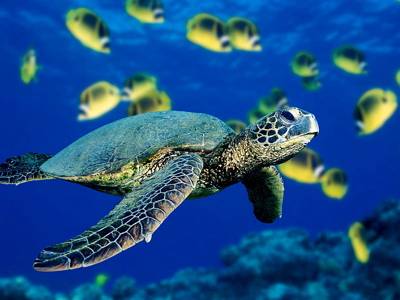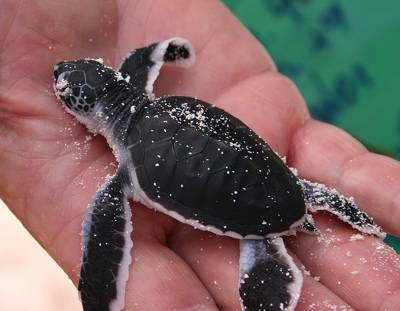A new study has been done to assess the effects that fisheries have on sea turtles compared to other global threats. This study also look at the legal standpoint that these fisheries have, since all marine turtles are on the IUCN red list of threatened species. The research was led by Frances Humber a PhD student at the University of Exeter.
 |
| Green sea turtle Chelonia mydas |
There has been large scale taking of turtles all over the world. The peak was in the late 1960's when it was estimated that the national intake of sea turtles was over 380,000. There has been increased awareness across the entire world with 178 countries signed up to the Convention of International Trade in Endangered Species of Wild Fauna and Flora (CITES). With this there are restriction in the international trade of turtle products. There is still legal taking of the turtles for traditional coastal communities that support themselves with small scale fisheries. This is one of the major threats to Chelonia mydas the green sea turtle.
The researches collected data from 600 publications that covered all sea turtles. They estimated that more around 42,000 sea turtles are caught legally each year. These turtles are predominately green sea turtles. They also have estimated that about 2 million turtles have been caught since the 1980's. They also found that a minimum of 65,000 turtles are captured illegally since 2000. Therer is much difficulty finding information regarding the illegal capturing of sea turtles so they estimate that there could be much more illegal captures.
 |
| Green sea turtle hatchling |
There has also been study's showing that around 30% of hatchlings don't survive their trip to the deep waters after hatching. The study also looked at how long the turtles can survive off of their yolk sac. The study was conducted by David Booth from the University of Queensland. He studied this by capturing hatched sea turtles and measuring their kilojoules consumption during their 18-hour swim. They found that they consume 4.79 kilojoules and can survive about two weeks after they've hatched without feeding. These studies are vital to the safety of all sea turtles. Hopefully this research will lead to more laws being made across the world to protect sea turtles.
Resources:
I just googled some sea turtle info, and I didn't realize that there are only 7 species of marine turtles! It's sad that ALL sea turtles are listed as either endangered, threatened, or vulnerable. I'm surprised that legal taking still occurs when all species are threatened.
ReplyDeleteI took a cruise to the Cayman Islands a couple years ago and went to the turtle farm on the island. They do turtle releases, support conservation, etc. When I got there, I was horrified to find out that they serve green sea turtle in their restaurant! Sad...